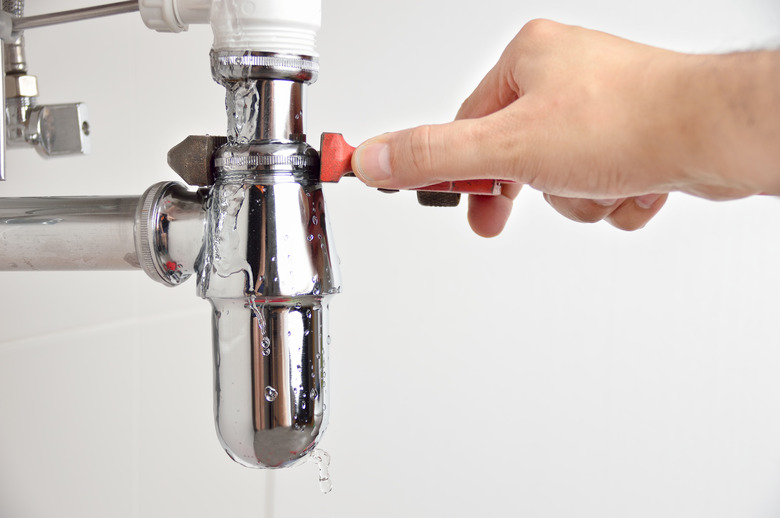The Difference Between Pipe Joint Compound & Plumbers Putty
We may receive a commission on purchases made from links.
Pipe joint compound and plumber's putty are both types of plumbing sealant, but they are used for different applications. Both are designed to prevent leaks from plumbing fixtures, pipes and fittings, but using the wrong plumbing sealant can lead to leaks and water damage. While they are both handy products to have in your toolbox, it's important to know which sealant is the right one for whatever project you're working on.
Pipe Joint Compound
- Prevents leaks in pipes and fittings
- Thick liquid that comes in several colors
- Applied with a brush to threads of pipes and fittings
- Holds seal under pressure
Plumber's Putty
- Generally used to fill gaps
- Oil-based plumbing sealant that's comparable to silly putty
- Commonly used under kitchen sinks to seal sink edge
- Does not hold seal under pressure
What Is Pipe Joint Compound?
What Is Pipe Joint Compound?
Pipe joint compound, also referred to as pipe dope, is a thread sealing adhesive used to prevent leaks in pipes and fittings. Pipe joint compound is a thick liquid that comes in several colors, including white, yellow and blue, and is applied with a brush to the threads of pipes and fittings. It is occasionally used in areas that aren't threaded, such as on the ferules of compression joints. There are different formulations of pipe joint compound for use on pipes carrying water, gas, oil, water and air.
Pipe joint compound can be applied in hot and cold temperatures and holds its seal under pressure, making it the perfect sealant for water pipes. It is often used in place of Teflon tape, which is a pipe sealant tape, and provides a stronger seal than Teflon. Some plumbers will use the two together to provide a tighter fit. When they are used together, the pipe sealant tape is tightly wrapped several times around the threads and then the pipe joint compound is applied on top of the tape.
What Is Plumber's Putty?
What Is Plumber's Putty?
Plumber's putty is an oil-based plumbing sealant used to seal areas that are not under pressure. It is quite pliable and has a texture similar to silly putty. Plumber's putty is commonly used under kitchen sinks to seal the area between the sink edge and the counter top, and on sink and tub drains. While pipe dope is used on pipe threads where there is pressure, plumber's putty is generally used to fill gaps in drains and on sinks.
Plumber's putty differs from pipe joint compound in that it can be used to temporarily stop an emergency leak in certain plumbing situations, such as a cracked slip joint nut. Remember, plumber's putty will only work in areas without pressurized water. And, because it won't work under pressure, plumber's putty is not used with or as a replacement for pipe sealant tape.
Tips on Using Pipe Joint Compound and Plumber's Putty
Tips on Using Pipe Joint Compound and Plumber's Putty
When working with either pipe joint compound or plumber's putty, there are a few things to keep in mind.
Here's are some tips for working with pipe joint compound:
- Petroleum-based pipe joint compound should not be used with PVC or other plastic pipes because it will deteriorate the plastic.
- It can also act as a lubricant on PVC pipe and make it slippery, making it easy to over-tighten and crack pipes and fittings.
Here are some tips for working with plumber's putty:
- When applying plumber's putty, be sure the area is completely clean and dry in order for it to seal correctly.
- Plumber's putty can sometimes dry out and harden over time, and if leaks develop it will need to be reapplied.
- Be careful not to use too much putty, as this can cause water to collect in areas.
- Because most plumber's putty contains oil, it should not be used on granite or other porous surfaces.
